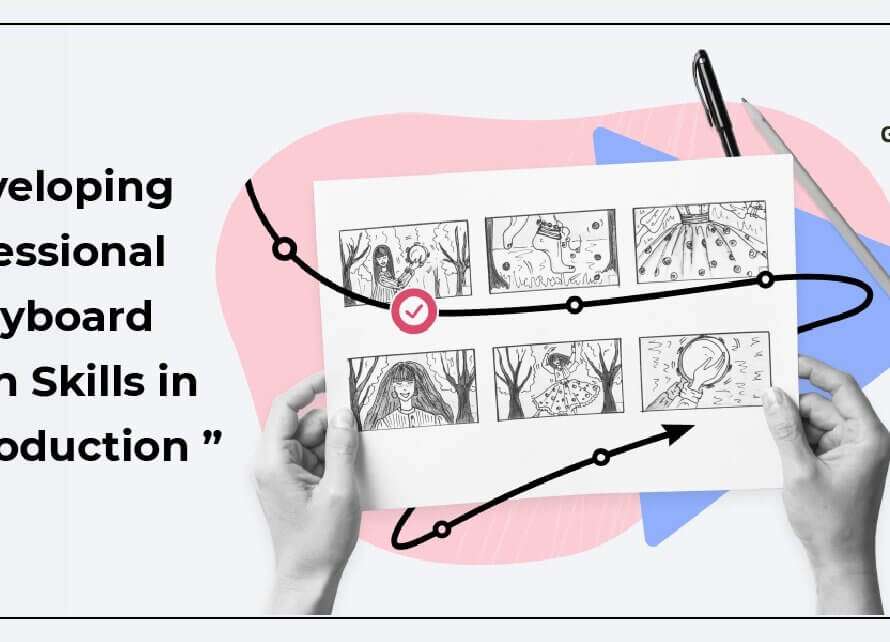In today’s rapidly advancing world of technology, the field of medical communication is also evolving at an astonishing pace. One of the most promising advancements in this field is the integration of 3D animation and virtual reality (VR). These cutting-edge technologies have the potential to revolutionize the way healthcare professionals communicate complex medical concepts to patients, researchers, and other stakeholders. In this article, we will explore the future of medical communication and the role that 3D animation and VR play in this exciting transformation.
Understanding 3D Animation in Medical Communication
3D animation is a powerful tool that allows healthcare professionals to visualize complex medical procedures and concepts in a way that is easily understandable to the layperson. Through the use of computer-generated imagery, 3D animation can bring medical data to life, creating dynamic visuals that enhance the understanding of intricate biological processes. By using this technology, medical professionals can effectively communicate the intricacies of diseases, treatments, and surgical procedures to patients, helping to bridge the gap between medical jargon and patient comprehension.
Moreover, 3D animation can also aid in medical education and training. By simulating medical scenarios and visualizing anatomical structures, students and healthcare professionals can gain a deeper understanding of complex medical concepts. This immersive learning experience can significantly enhance knowledge retention and improve the overall quality of medical education.
Virtual Reality: Opening Doors for Innovative Medical Communication
Virtual reality (VR) is a groundbreaking technology that has the potential to revolutionize medical communication. By creating a simulated environment that can be interacted with through a specialized headset, VR allows healthcare professionals to transport patients and stakeholders into a virtual world where they can experience medical scenarios firsthand. This immersive experience can be particularly useful in patient education, as it allows patients to have a better understanding of their condition and the proposed treatment options.
Additionally, VR can also be used as a tool for medical research and development. By creating virtual models of the human body or simulating medical procedures, researchers can gain valuable insights and test novel techniques in a safe and controlled environment. This not only accelerates the pace of medical advancements but also reduces the risks and costs associated with traditional research methods.
Applications of 3D Animation and Virtual Reality in Healthcare
- Simulation of complex medical procedures
- Enhanced medical education and training
- Visualizing anatomical structures and functions
- Communicating medical concepts to patients
3D animation has revolutionized medical procedures by offering a safe and realistic environment for healthcare professionals to practice complex surgeries and procedures. Additionally, it has enhanced medical education and training, allowing students to interact with lifelike models, explore detailed anatomical structures, and grasp medical concepts more effectively. Moreover, 3D animation empowers healthcare providers to communicate intricate medical concepts to patients in a visually engaging way, enabling them to better understand their conditions and treatment options.
Challenges and Limitations of Integrating 3D Animation and Virtual Reality in Medical Communication
While the future of medical communication with 3D animation and virtual reality is promising, there are challenges and limitations that need to be addressed. One major challenge is the cost associated with implementing these technologies. The high cost of hardware, software, and specialized training can be a barrier for many healthcare institutions, especially smaller ones with limited resources.
Another limitation is the learning curve associated with using 3D animation and virtual reality tools. Healthcare professionals need to undergo specialized training to effectively utilize these technologies. This can be time-consuming and may require a significant investment in education and training programs.
Moreover, there are ethical considerations related to patient privacy and data security. As 3D animation and virtual reality involve the use of patient data, healthcare institutions must ensure that proper measures are in place to protect patient confidentiality and comply with privacy regulations.
The Future of 3D Animation, Virtual Reality, and Graphic Design in Healthcare
Despite the challenges and limitations, the future of medical communication with 3D animation, virtual reality, and graphic design is bright. As technology continues to advance, these tools will become more accessible, cost-effective, and user-friendly. This will enable healthcare professionals to leverage the full potential of these technologies and enhance the quality of patient care.
In the future, we can expect to see further integration of 3D animation and virtual reality in medical education and training. Healthcare professionals will have access to immersive learning experiences that simulate real-life medical scenarios, enabling them to acquire and refine their skills in a safe and controlled environment.
Training and Education Opportunities in 3D Animation and Virtual Reality for Healthcare Professionals
As the demand for healthcare professionals skilled in 3D animation and virtual reality grows, training and education opportunities in these fields are also expanding. Many universities and online platforms now offer specialized courses and programs that cater to the needs of healthcare professionals.
These training programs provide healthcare professionals with the necessary knowledge and skills to effectively utilize 3D animation and virtual reality in their practice. From basic principles to advanced techniques, these courses cover a wide range of topics, ensuring that healthcare professionals are well-equipped to harness the power of these technologies.
Conclusion: Embracing the Future of Medical Communication with 3D Animation and Virtual Reality
The future of medical communication is undoubtedly exciting, thanks to the advancements in 3D animation, virtual reality, and graphic design. These technologies have the potential to transform the way healthcare professionals communicate with patients, colleagues, and stakeholders. By embracing these innovations and investing in training and education, healthcare professionals can enhance patient care, improve treatment outcomes, and revolutionize the field of medicine. It is time to embrace the future of medical communication and harness the power of 3D animation and virtual reality for the betterment of healthcare.
Elevate healthcare communication with GridsGlobal’s expert Graphic Design and 3D Video Solutions. Craft compelling visuals for patients and professionals alike, revolutionizing medical information sharing. Choose GridsGlobal for impactful, industry-tailored creative excellence.





